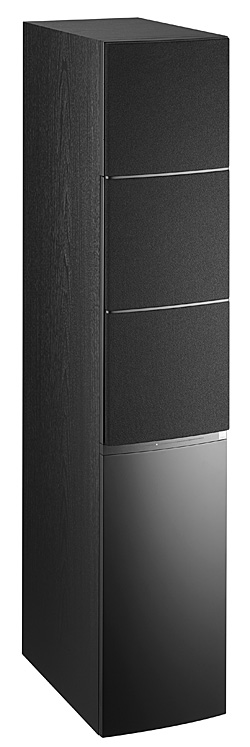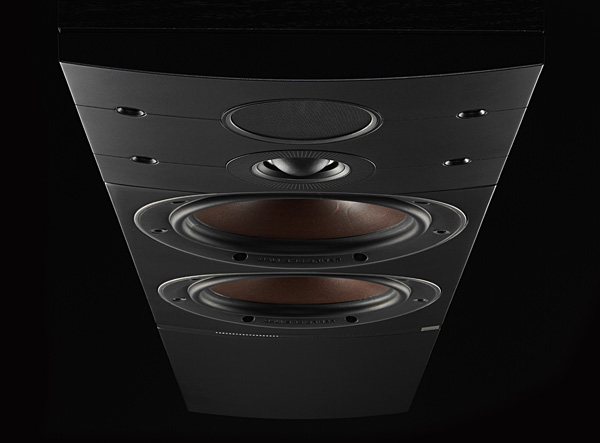The S9 game is one of the best gaming application for players who like card games and want to earn real money by just playing games that are available. If you are also one of them you should visit the page and download and start earning real money in no time.
Dali Callisto 6 C Wireless Loudspeakers Review Page 2
Master volume can be adjusted via the app, the Sound Hub's remote control or volume knob, or by swiping across the top front of either Callisto speaker. Any way you go, data is relayed to the Sound Hub so that all components remain fully synchronized, and a row of white LED indicators on the 6 C's front reflect the adjustment. While DALI's remote handles the system's control basics, I found myself relying on the BluOS app for everyday use. Compared with many other wireless control apps I've encountered, this one proved extremely easy to setup and use. It instantly recognized the NPM-1 module installed in the Sound Hub and making a wireless connection with a Bluesound Pulse 2i speaker in my kitchen was a simple matter of selecting it in my iPhone's Wi-Fi setup panel and entering my password. The app features two control panels: one for selecting individual players (or multiroom player groups) and a second for playback sources like streaming apps, Internet radio stations, or UPnP servers. (BluOS has already been covered in-depth in multiple Sound & Vision Bluesound and NAD product reviews.) For my purposes, I linked the app to my Tidal, Qobuz, and TuneIn accounts. I also verified that both the DALI Sound Hub and Bluesound Pulse 2i worked as Roon endpoints, though I didn't use Roon for my listening tests.
 Performance
Performance
Setup done, I settled in for some quality time with the Callistos. One track I streamed from Tidal, "Darling," by Indie rock band Real Estate, provided a clear indication of the dual dome/ribbon tweeter module's sonic character. While this song's 12-string electric guitar can sound bright on many speakers, it was perfectly balanced on the 6 C system, with just the right amount of treble zip. I also heard a fine sense of layering, with the guitars, keyboards, and vocals all coming through clearly.
My earlier efforts to tweak the system's low-end performance was rewarded here with a clean separation between kick drum and bass guitar, which sounded notably tuneful and well-defined.
Moving on to something more bass-heavy, I streamed an electronic track, "produk 29," by Aphex Twin. There was a powerful, almost physical, quality to the beats, along with impressive low-end extension from the synthesized bass. The song's keyboards and swirling ambient beds were also conveyed in wide and warm manner that let me get lost in the sound.
The sense of effortlessness the speakers managed with Aphex Twin carried over when I streamed a high-res version of "Whole Lotta Love" from Qobuz. This 50-year-old Led Zep track sounded shockingly fresh on the Callistos: Jimmy Page's guitar was raw and aggressive, and the combined slam of bass guitar and drums had a dynamic, propulsive effect. Listening to the psychedelic mid-section, stereo-panned effects came across in a vivid and dramatic manner. I was also surprised at how loud the system could play: with volume set to mid-point, there was more than enough level to fill my relatively large listening room.
It was evident that the Callisto system could rock, but it also performed well with jazz. Listening to Ralph Alessi's "Improper Authorities" from the album Imaginary Friends, I experienced the massive drum sound characteristic of ECM recordings, along with a clear sense of the musicians' presence in space. The interplay of Alessi's trumpet and Ravi Coltrane's saxophone was notably fluid as it unwound across the soundstage. Overall, the Callisto system's presentation with this track, and many others that I listened to, was warm, wide, and forgiving. It may have lacked some of the precision I've heard from some other speakers/electronics combinations, but in general I had little to complain about.

My final point of business was to listen to digital vs. analog inputs on the Sound Hub. After playing a few reference tracks, it became clear that the digital inputs provided superior performance—the sound was more detailed, with richer spatial cues. Analog inputs converted to digital, in contrast, came across as a bit lifeless.
Conclusion
DALI's Callisto 6 C system impressed me with its easy setup and reliable playback. During my time with it, I experienced no dropouts or glitches—it was like using a traditional wired stereo. I also found the sound to be instantly appealing, and that impression held fast. At $5,747, the Callisto 6 Cs are pricier than many other wireless speaker options on the market, but the combination of features, ease of use, and performance make it a compelling choice for cord-cutting audiophiles.
- Log in or register to post comments






























































